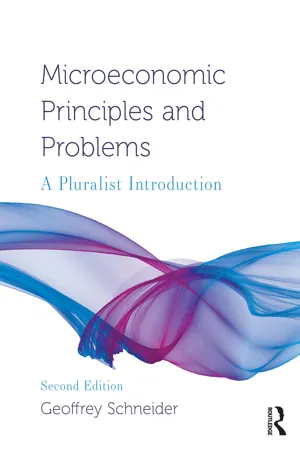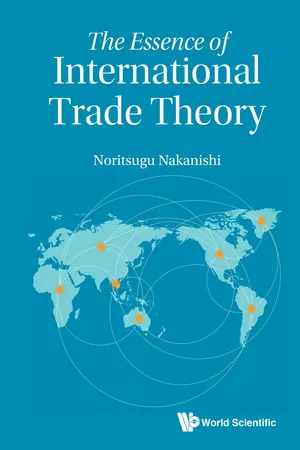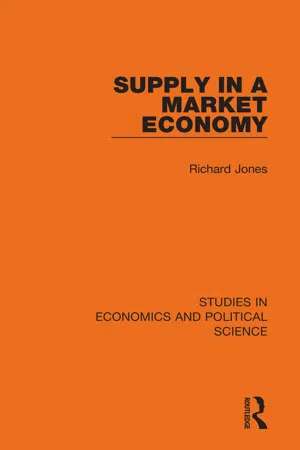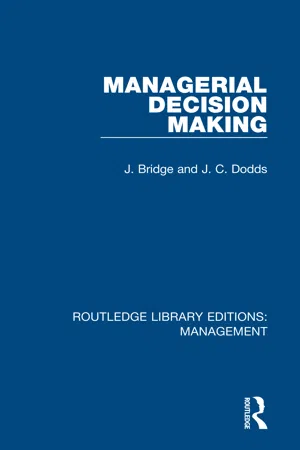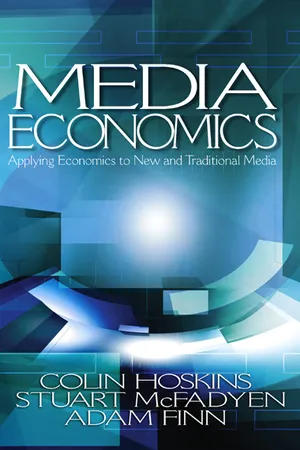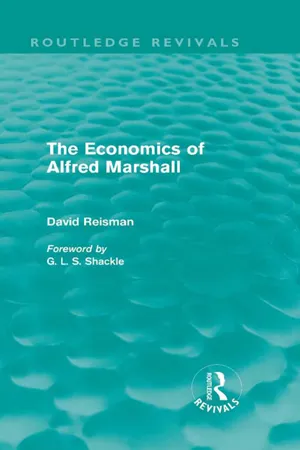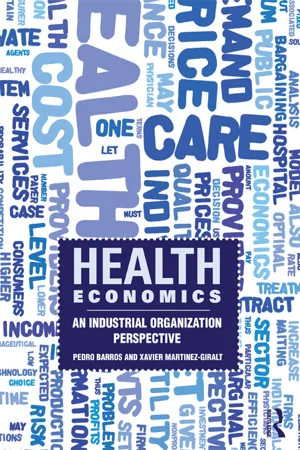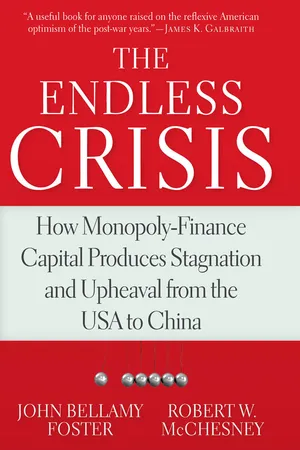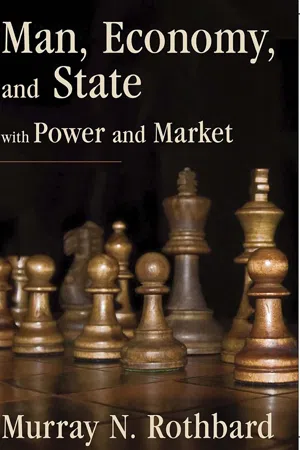Economics
Monopolistic Competition
Monopolistic competition is a market structure characterized by a large number of firms selling similar but not identical products. Each firm has some degree of market power due to product differentiation, allowing them to set prices. Entry and exit are relatively easy, and firms compete based on product differentiation, advertising, and branding. This market structure combines elements of both monopoly and perfect competition.
Written by Perlego with AI-assistance
Related key terms
11 Key excerpts on "Monopolistic Competition"
- eBook - ePub
Microeconomic Principles and Problems
A Pluralist Introduction
- Geoffrey Schneider(Author)
- 2024(Publication Date)
- Routledge(Publisher)
Monopolistic Competition is a market very similar to perfect competition, but there is one major difference: Firms in a monopolistically competitive market have a monopoly on one unique aspect of the market. This product differentiation allows some firms to charge higher prices than others, which is not possible in a perfectly competitive market.12.3 Monopolistic Competition
Monopolistic Competition is another very competitive market structure with a large number of small firms due to easy entry into the market. Unlike in perfect competition, firms have a monopoly over certain unique business characteristics such as quality, brand, or location. This gives firms some control over their prices. Firms supply goods that are close but not perfect substitutes for each other. Examples include local services such as doctors, dentists, and lawyers, and local retailers such as restaurants, bars, and gas stations. Businesses in all of these industries offer a similar product, but some can charge a higher price than others due to the differences in quality, brand, and location.The major characteristics of a monopolistically competitive market are as follows:- Slightly differentiated products: Goods are close but not perfect substitutes for each other. If firms can successfully improve quality and establish brand name recognition, they can further differentiate their product from competing ones.
- Large number of sellers and buyers: The large number of competitors and consumers means that no one actor has a large influence over the market. Some firms are larger than others, but no firm is dominant.
- Easy entry and exit:
- eBook - ePub
The Microeconomics of Wellbeing and Sustainability
Recasting the Economic Process
- Leonardo Becchetti, Luigino Bruni, Stefano Zamagni(Authors)
- 2019(Publication Date)
- Academic Press(Publisher)
This criticism suffers from a weakness, which Chamberlin himself pointed out: it overlooks the fact that differentiation is linked to consumer preferences, who are often willing to pay a higher price in order to have the possibility of choosing from among different varieties of the same type of good. This is as if to say that product diversity comes at a price. Said another way, the possibility of actually being able to make a choice is a positive argument in consumers' utility functions, who show that they increasingly appreciate its value. Regarding the comparison with a monopoly, note that over the long run extra profits are zero in both perfect and Monopolistic Competition. A monopoly enterprise, however, can earn extra profits even over the long run as long as it is able to maintain the entry barriers it set up for its protection. Finally, we observe that resources are inefficiently allocated in both a monopoly and in Monopolistic Competition.6.5. An oligopolistic market
6.5.1. Its distinctive characteristics
An oligopoly is a market structure in which several companies operate, but none of them have a negligible market share (as happens in perfect competition). Every oligopolistic enterprise is thus able to exercise a certain influence on the relevant price and/or quantity variables and is aware that other companies operating in the sector can, by their decisions, do the same. The distinctive nature of an oligopolistic structure is that there is strategic interaction between companies; such interaction is absent in a monopoly and in perfect competition, in which companies, taking price as a given, behave atomistically.Consider a duopoly, or a market in which there are only two suppliers and multiple buyers. In addition to company A , another company B produces and sells an identical product as its rival. Suppose the two companies know the behavior of the good's consumers, summarized by the demand function p=f (q ); p indicates the price and q indicates the total output, which is equal to the sum of qAand qB, representing the production levels of the two companies A and B respectively. For the sake of simplicity, assume that production costs are zero. If each company independently chooses its output level to maximize its profits (indicated by π ), then firm A chooses qAto maximize πA=pqA=f (qA+qB)qA. As we see, πAalso depends on qB; that is, A 's optimal output level choice is no longer independent of the output level simultaneously chosen by the other company, as it is in perfect competition. Thus there is no demand curve for an individual company in an oligopoly; the quantity of product an oligopolist can sell at a certain price depends on what its rivals do. This is why an oligopolist can never know with certainty - eBook - ePub
- Noritsugu Nakanishi(Author)
- 2018(Publication Date)
- WSPC(Publisher)
Chapter 6Monopolistic Competition
We develop models incorporating Monopolistic Competition, which are characterized by the increasing-returns-to-scale technology and product differentiation. The monopolistically competitive models have been first introduced to international trade theory in order to explain so-called intra-industry trade — the phenomenon that goods or services within the same category of a certain classification are exchanged internationally. Since then, they have been applied to various topics that are difficult (sometimes, impossible) to explain within the framework of classical theories of comparative advantage based on perfect competition.Earlier models of Monopolistic Competition heavily rely on the assumption of technological symmetry among firms.1 Stimulated by the recent empirical findings that firms even within the same industry have different characteristics and diversified productivities, the monopolistically competitive models have been modified so as to suitably incorporate such firm heterogeneity. Moreover, the development of monopolistically competitive models has brought about a renewal or a revival of a branch of economics that examines geographic characteristics of an economy such as locational decisions and distribution of economic agents (firms and/or workers), regional concentration of industries, formation of cities, and others. This is now known as the New Economic Geography (NEG) or Spatial Economics.6.1Product Differentiation
Suppose that there are two goods of which basic functions are the same. When consumers can distinguish one good from the other by such non-price aspects as qualities, colors, trademarks, logos, brand names, packaging, after-sales services, and so forth, we say that these goods are differentiated. When goods are distinguished by their qualities (from low to high), this is called vertical differentiation; other cases are called horizontal differentiation - eBook - ePub
- Richard Jones(Author)
- 2021(Publication Date)
- Routledge(Publisher)
14 In the 1930s, two authors simultaneously and independently turned away from the theory of perfect competition to develop theories in which elements of monopoly and competition coexisted. As was stated earlier, it can be argued that this period witnessed the evolution of the theory of the firm, because in the market conditions specified in the development of these models the firm attracts to itself a far greater role than is the case in perfect competition. Numerous areas of activity are recognised – for example product differentiation and seller costs – and a greater element of realism is achieved in these theories. However, the traditional marginalist framework of analysis is retained.One of the central pillars of the theory of Monopolistic Competition is the idea that products may be differentiated – that is, made to appear imperfect substitutes for other similar goods – within a broadly defined market. While this accords well with the reality of the market situation, it introduces a conceptual problem which has never been completely resolved. This is that it is no longer strictly correct to speak of one market for, say, cars. Consequently it is again difficult to talk in terms of an industry supply curve in monopolistic markets.In the development of economic theory the theory of Monopolistic Competition has not, in the event, played the strategic role which might at one time have been anticipated. It has come under particularly severe criticism from the so-called Chicago school of economists who have argued that the development of the theory has added little to economic knowledge. This argument is very closely linked to the methodological debate reviewed earlier. Those economists who retain a belief in the analytical value of the polar models of market structure – notably perfect competition – would find little to assist them in the theory of Monopolistic Competition at the cost of increased complication. In the sense the theory falls between two stools, because it is firmly cast in the marginalist framework and, as a result, offers little to those who seek it to escape this (in their view) constriction.In the short run the analysis of Monopolistic Competition is very similar to that of monopoly, as can be seen from Figure 4.10 . Each producer acts in a way consistent with the profit-maximising assumption; that is, he equates MC to MR. This leads, in the diagram, to an output of OQ1 at price OP1 . Profit is represented by the area NMLP1. - eBook - ePub
- J. Bridge, J. C. Dodds(Authors)
- 2018(Publication Date)
- Routledge(Publisher)
We can in the first instance classify the different market structures firms are likely to encounter. The usual approach is to view the market structure as a continuum with perfect competition and monopoly at the two extremes. In between these two poles lie various shades of competitive and monopolistic markets. Generally in economics only four structures are taken as representative models though it is recognised that these only represent sufficiently different structures to form a basis for examining the behaviour of firms.The four market structures recognised are:- Perfect Competition.
- Monopolistic Competition.
- Oligopoly – pure and imperfect.
- Monopoly.
In this section we begin with an examination of the two extremes, and in passing give brief mention to Monopolistic Competition, but our prime concern will be with oligopoly. We justify this emphasis because in the first place oligopoly is by far the most significant variety in terms of industrial output and secondly it is the one where determinate models are difficult to formulate on account of the interdependence which confronts oligopolists in decision making.Perfect Competition
The perfect competition model contains some very restrictive assumptions which will never be satisfied in real life. Historically, however, the model did have some empirical validity and one can also use the perfect competition model to show the link between the firm and the market and it is therefore a useful paradigm. Assumptions made for perfect competition to hold are:1. Many sellers and buyers: - eBook - ePub
Media Economics
Applying Economics to New and Traditional Media
- Colin Hoskins, Stuart M. McFadyen, Adam Finn(Authors)
- 2004(Publication Date)
- SAGE Publications, Inc(Publisher)
This market structure is similar to perfect competition, with free entry and exit and many small firms, but in Monopolistic Competition, the firms produce differentiated products. A monopolistic competitor thus has some control over price because no other firm makes an identical product. This price discretion is very limited, however, because there are many competitors producing close substitutes. A given customer may prefer the XYZ Video Store because of its location, selection, layout, or some other feature. The customer may stay loyal to the store if its nightly rental rate is $0.25 higher than some competitors, but not if it is $0.50 higher. The demand curve for the firm is thus negatively sloped.In Monopolistic Competition, as in perfect competition, each of the many small firms has such a small market share that a decrease in price by one company will have no significant effect on the sales of any other firm. Thus each monopolistic competitor will make its price decision in the belief that other firms will leave their prices unchanged. This differs from oligopoly, where other firms feel a need to follow the price decreases of a competitor to protect market share. (If you think that the video stores in the area you live in would react to the price cut of a competitor, then video stores in your market are not an example of Monopolistic Competition but of oligopoly.)Free entry and exit means that only zero economic profits can be earned in long-run equilibrium. 9.1.1 Short-Run Equilibrium Under Monopolistic CompetitionThe short-run equilibrium is the price and output at which MR = SMC. P0 and Q0 for a typical firm are shown in Figure 9.1 . In short-run equilibrium, the firm may make positive, zero, or negative economic profits. To illustrate this, three alternative average total cost curves are drawn under different assumptions about the level of fixed costs. If ATC1 applies, the typical firm enjoys positive economic profits, as AR > ATQ at the profit maximizing price and output. If ATC0 applies, zero economic profits are earned, as AR = ATC0 . If ATC2 applies, negative economic profits are earned, as AR < ATC2 . However, the firm will still produce output Q0 at price P0 , rather than shut down, as long as AR is greater than average variable cost (not shown in Figure 9.1 - David Reisman(Author)
- 2013(Publication Date)
- Routledge(Publisher)
2 and that there is more merit in being fuzzily right than in being precisely wrong. In his ambiguous and open-ended way he seems to have treated all four of the principal market structures that figure in contemporary economics textbooks, and it is with these four market structures that we shall be concerned in the four sections of the present chapter.6.1 PERFECT COMPETITION
The theoretical analysis of perfect competition, Stigler says, was long treated ‘with the kindly casualness with which one treats of the intuitively obvious’: ‘It is a remarkable fact that the concept of competition did not begin to receive explicit and systematic attention in the main stream of economics until 1871.’1 Economics rapidly made up for lost time and extensive definitions may be found in books such as Jevons' Theory of Political Economy (1871) and Edgeworth's Mathematical Psychics (1881).2 Marshall's own definition is as follows: ‘A perfect market is a district, small or large, in which there are many buyers and many sellers all so keenly on the alert and so well acquainted with one another's affairs that the price of a commodity is always practically the same for the whole of the district.’3 In such a market, ‘buyers generally compete freely with buyers, and sellers compete freely with sellers’,4 and the outcome of such ‘free competition’ is precisely what we would anticipate: there is ‘only one price on the market at one and the same time’ and no dealer is driven to ‘taking a lower or paying a higher price than others are doing’.5 Always assuming, of course, that four conditions implicit in the definition of the perfect market are satisfied.First , product homogeneity. We must assume that ‘the commodities referred to are always of the same quality’.6 This is the case, for example, with ‘raw produce’ (including the ubiquitous fresh fish), and also with some manufactured outputs - as where the goods in question are ‘so simple and uniform’, so ‘plain and common’, that their production ‘can be reduced to routine’ and their distribution can be ‘wholesale in vast quantities’ (goods like, say, ‘steel rails and calico’ which are available at a multiplicity of different outlets).7 Homogeneity in the sense of the economist must not, however, be confused with homogeneity in the sense of the physicist, as Marshall reflected in an important footnote on the subjective and the objective which occurs in his fragmentary Essay on Value and which reads as follows: ‘Inequalities of price are indeed often more apparent than real. A man who pays four shillings for a pair of gloves which he knows he could have bought in the next street for three, pays three shillings for the gloves and expends the fourth on love of display, on indulgence of old associations, or saving of time. He buys something extra just as much as if the gloves had had extra fancy work upon them.’8- eBook - ePub
Health Economics
An Industrial Organization Perspective
- Xavier Martinez-Giralt, Pedro Barros(Authors)
- 2013(Publication Date)
- Routledge(Publisher)
ex-ante the overall effect is ambiguous. An empirical appraisal of the question is necessary to solve the ambiguity.Figure 4.8 Monopolistic Competition equilibrium.The model of Monopolistic Competition just described lacks the strategic interaction characterizing the models of oligopoly. Therefore, let us consider that entry restrictions limit the number of active firms in the market, while maintaining all the other features in of Assumption 4.14. This true oligopoly model of product differentiation allows us to study firms’ decision processes where the strategic variable may be either the volume of output (as in the case of homogeneous products) or the price (without obtaining the degenerate outcome found in the case of homogeneous products). Then, a question arises regarding comparing the equilibrium in both cases.To make the analysis tractable, let us follow Singh and Vives (1984). These authors consider a system of linear demand functions and compute the equilibrium in prices and the equilibrium in quantities. It turns out that the equilibrium in quantities leads to higher prices and lower output volumes than the price equilibrium. Singh and Vives then say that competition in quantities is more monopolistic (in the sense that it gives the producers higher capacity to increase the price with respect to the marginal cost, i.e. higher Lerner index) than the competition in prices. Also, the difference in prices between both equilibria depend on the degree of differentiation between the two products.One question remains in the analysis. Given that firms are allowed to choose to compete in prices or in quantities, there are various possible types of competition in the market: both firms may decide (unilaterally) to choose prices; both firms may decide to choose quantities; and one firm may decide to choose the price while the other decides to choose the quantity. Singh and Vives also show that when the two varieties are substitute goods, both firms find it optimal to select quantities as their strategic variable (in the sense that obtain a higher level of profits than with the other three alternatives). This gives consistency to the equilibrium in quantities in the models of oligopoly with product differentiation characterized by the presence of a representative consumer. - eBook - ePub
The Endless Crisis
How Monopoly-Finance Capital Produces Stagnation and Upheaval from the USA to China
- John Bellamy Foster, Robert W. McChesney(Authors)
- 2012(Publication Date)
- Monthly Review Press(Publisher)
For Baran and Sweezy, a fundamental change had occurred in the competitive structure of capitalism. “We must recognize,” they wrote at the outset of their book,that competition, which was the predominant form of market relations in nineteenth-century Britain, has ceased to occupy that position, not only in Britain but everywhere else in the capitalist world. Today the typical economic unit in the capitalist world is not the small firm producing a negligible fraction of a homogeneous output for an anonymous market but a large-scale enterprise producing a significant share of the output of an industry, or even several industries, and able to control its prices, the volume of its production, and the types and amounts of its investments. The typical economic unity, in other words, has the attributes which were once thought to be possessed only by monopolies. It is therefore impermissible to ignore monopoly in constructing our model of the economy and to go on treating competition as the general case. In an attempt to understand capitalism in its monopoly stage, we cannot abstract from monopoly or introduce it as a mere modifying factor; we must put it at the very center of the analytical effort.42Building on Kalecki’s degree of monopoly concept, Baran and Sweezy argued that Marx’s law of the tendency of the profit rate (as determined at the level of production) to fall, specific to competitive capitalism, had been replaced, in monopoly capitalism, by the tendency for the rate of potential surplus generated within production to rise. This led to a gravitational pull toward overaccumulation and stagnation: for which the main compensating factors were military spending, the expansion of the sales effort, and the growth of financial speculation.43 By exercising a tighter control over the labor process, and thus appropriating more labor power from a given amount of work—as Braverman demonstrated in Labor and Monopoly Capital (1974)—and by being so much better able to search the globe for cheaper labor, the system was able to generate greater profits. So it was not just that more profits shifted to the monopolies—more profit was generated in the system itself.44 - eBook - ePub
- Gary Becker(Author)
- 2017(Publication Date)
- Routledge(Publisher)
MC in the figure. Economists have not been attracted by such a profit-sharing solution, partly because it violates the antitrust laws in several countries, and partly because it does not appear to be empirically important (although it has not been seriously investigated. See the comments at the end of this lecture). Consequently, they have searched for other solutions, varying from stay-out pricing to economic warfare, but these all tend to violate the symmetry condition.The theory of Monopolistic Competition develops a symmetric solution that does not require profit-sharing by permitting different firms with the same cost curves to produce products that are differentiated by consumers. New firms enter such a monopolistic-competitive industry to produce their own products as long as profits are available, and their entry shifts downward the demand curves of firms already in the industry. Entry would continue, and demand curves would continue to fall, until the tangency position given by point c in Figure 20.2 was reached. At that point profits are zero because average costs equal price, and no additional firms have any incentive to enter.Although the concept of Monopolistic Competition captures relevant dimensions of the competition prevailing in many industries, the tangency solution has serious defects. For example, any two firms would have an incentive to merge and produce more cheaply (and more profitably) the combined outputqmsuitably differentiated. The pressure toward combination, unless legally or otherwise checked, would destroy the tangency solution, as well as the conclusion that firms in monopolistic-competitive industries necessarily produce on the decreasing sections of their average cost curves.Figure 20.2A still different solution uses the property of the tangency solution that profits are zero and yet does not assume differentiated products. It is given by point r in Figure 20.1 ; average costs equal price at the outputQr ,and no other firms have an incentive to enter. The difficulty with this solution is that profits appear greater atQm - eBook - ePub
- Murray N(Author)
- 2014(Publication Date)
- Editorial Bubok Publishing(Publisher)
For competition exists among all products for the consumer’s dollar, while very few articles are rigorously homogeneous. Mrs. Robinson then tries to evade the issue by falling back on “common sense” and defining monopoly as existing where there is a “marked gap” between the product and other substitutes the consumer may buy. But this will not do. Economics, in the first place, can establish no quantitative laws, so that there is nothing we can say about sizes of gaps. When does the gap become “marked”? Secondly, even if such “laws” were meaningful, there would be no way to measure the cross-elasticities of demands, the elasticity of substitution between the products, etc. These elasticities of substitution are changing all the time and could not be measured successfully even if they all remained constant, since supply conditions are always changing. No laboratory exists where all economic factors may be held fixed. After this point in her discussion, Mrs. Robinson practically forgets all about heterogeneity of product. Joan Robinson, Economics of Imperfect Competition (London: Macmillan & Co., 1933), pp. 4–6. Also cf. Hunter, “Product Differentiation and Welfare Economics,” pp. 547ff. 30 Quoted in Richard T. Ely and others, Outlines of Economics (3rd ed.; New York: Macmillan & Co., 1917), pp. 190–91. Blackstone gave almost the same definition and called monopoly a “license or privilege allowed by the king.” Also see A. Leo Weil, Chicago Conference, p. 86. 31 The onrush of monopoly grants by Queen Elizabeth I and Charles I provoked resistance from even the Crown’s subservient judges, and, in 1624, Parliament declared that “all monopolies are altogether contrary to the laws of this realm and are and shall be void.” This antimonopoly spirit was deeply ingrained in America, and the original Maryland constitution declared that monopolies were “odious” and “contrary to … principles of commerce.” Ely, Outlines of Economics, pp. 191–92. Also see Francis A
Index pages curate the most relevant extracts from our library of academic textbooks. They’ve been created using an in-house natural language model (NLM), each adding context and meaning to key research topics.
